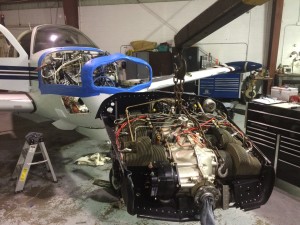Podcast: Play in new window | Download
April 1, 2016
When it comes to starting airplane engines, there are lots of opinions. It might be worth taking a new look at your technique.
Whatever your procedure is, your engine should be treated with as much care as possible.
How about asking these 4 questions:
- Why not try starting your airplane engine with the throttle all the way back? It makes for a much gentler start.
- Which looks more professional… a nice gentle and smooth start, or an abrupt start with an immediate roar to 1800 RPM? That one’s easy!
- Will your engine run smoothly with the throttle all the way back? It’s a good idea to check this occasionally.
- Does your engine need any idle adjustment to make it run properly?
In today’s episode, I talk about my favorite procedures for starting both a fuel injected engine, and a carbureted engine.
Here is the old, FAA training video that I mentioned in today’s podcast. And for me, it’s one more reason why it’s a good idea to get in the habit of starting your airplane engine with the throttle all the way back, in the closed position.
In this case, if the throttle had been all the way back, this incident would likely have been avoided.
Last week, I mentioned finding an engine thru stud loose, and the cylinder base nut broken… well, it turns out the engine needs a tear-down inspection due to not knowing how long the engine was run like that and needing to verify no internal engine damage has happened.
Here is that engine:



Thank you Dean, for the kind acknowledgement and for the very helpful podcast! I am going to do as you say and start pulling the throttle all the way back during starting. After landing at an airport to eat lunch, for example, and restarting an hour or two later, do you recommend the same starting procedure for a carbureted engine?
I watched the video. Boy, it gets your heart pumping to see something like that occur. Thanks for sharing. A reminder that will hopefully help us all be a little safer…
Yes, for your carbureted engine, after sitting for an hour or two, I would recommend the same starting procedure. For fuel injected engines, the procedure would be quite different.
Hi Dean- I’m catching up on comments, even though I listened to the episode a month ago. Thanks! This was a great episode, and it has revolutionized my starting procedure. My Archer’s engine has always started on the first try (except when overdue for a new battery) and I always had the throttle advanced much more than necessary. Now I feel as if I’m saving engine life every time I start following your procedure. Keep it up
Thanks Eric! People like you make this whole deal worthwhile! I’m really glad to hear about your new starting procedure. Your engine will appreciate it!
Thank you dean for this information. I wanted to share something I learned when transitioning to helicopters. The Robinson starting procedure includes idling the engine until the CHT is above a certain temperature before doing an engine run-up and waiting for a drop in CHT before shutting down. I wondered why I had not used this when flying fixed wing with the same engines. It was explained to me that the airplane requires less power to taxi and so the warm-up and cool down is accomplished during taxi. Since then I have been considering this factor if I do not have much of a taxi to a run up area or parking space before and after a flight to ensure that I am giving the engine the respect that it deserves. Thanks for the podcast, I look forward to each episode.
Thank you Mike! That is really valuable information, and I like how you took a procedure for a Robinson helicopter, and then thought it through and applied it in a common sense way to fixed wing operations. I will try to mention your comment in a future episode… I appreciate it, and I think it’s worth talking about.